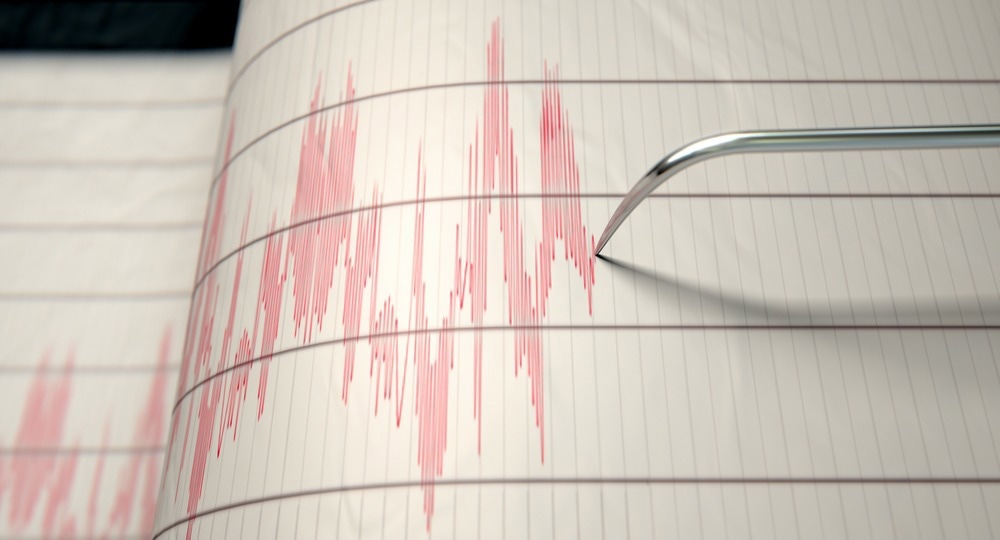A recent study published in Sensors demonstrates the use of downhole fiber-optic sensors for monitoring carbon dioxide.

Study: Monitoring Injected CO2 Using Earthquake Waves Measured by Downhole Fiber-Optic Sensors: CO2CRC Otway Stage 3 Case Study. Image Credit: Inked Pixels/Shutterstock.com
Tracking the trace inside the primary containment and spotting leaks into the zone above the reservoir requires monitoring changes in the formation characteristics of carbon dioxide. Time-lapse wireline logging can be used to do this. However, this method necessitates intervention and is not always feasible.
Permanent Receivers for Frequent Detection of CO2
Time-lapse is a crucial piece of technology for 4D reflection seismic monitoring. It is used to keep an eye on geothermal, oil and gas, and CO2 geosequestration projects. Seismic surveys must be acquired as regularly as feasible for some of these initiatives, such as monitoring CO2 storage, to ensure prompt detection of unintended subsurface changes like CO2 leakage from the target reservoir. However, conducting 4D seismic surveys regularly is too costly and disruptive.
Using permanent receivers, such as distributed acoustic sensors or DAS sources, partially alleviates these issues. Recently, it has become possible to constantly follow a small CO2 plume utilizing downhole DAS receivers and permanent seismic sources, producing a subsurface image every two days.
Permanent Receivers Use Seismic Energy for Monitoring Sub-surface Charges
Permanent receivers such as DAS record the affluence of seismic energy from numerous natural sources and human activities in addition to signals from controlled sources (earthquakes, mine blasts, ocean waves, machinery, and vehicular traffic). The monitoring cost decreases if some energy is harvested to supplement or replace active seismic sources for some jobs.
The seismological activity brought on by the injection or extraction of fluids is one source of ambient seismic energy. Induced seismicity provides important information on the geo-mechanical behavior of the subsurface, but it frequently lacks the geographical spread needed to characterize the subsurface.
Ambient noise tomography is a valuable additional tool for subsurface characterization. In most environments a lot of random seismic energy is present. ANT exploits this seismic energy. However, as ANT's primary method of analysis is surface wave analysis, it has a far lower vertical resolution than reflection seismology.
Subsurface Changes Monitoring by Seismic Amplitudes
Recent research shows that monitoring subsurface changes can also be done by recording changes in seismic amplitudes based on the straightforward tenet that formation softening increases displacement or strain. A comparison of DAS and well-log data shows that this association is accurate.
Using artificial active VSP data the hypothesis for a high-contrast medium has been developed. Research showed that this approach can identify the presence of CO2. It is possible to evaluate how well the approach works in a passive mode by utilizing the figure waves from these earthquakes.
The postulation uses earthquake wave amplitudes to track temporal variations in elastic properties. Earthquake sources are far away for the P-wave to enter as a refracted or diving wave that can roughly be compared to an upward-moving plane wave along the borehole. The approach is predicated on the idea that the elastic characteristics at a given point in space and time affect the strain amplitude as measured by DAS (the softer the formation, the larger the strain).
Fiber-Optic Sensors for CO2 Detection Using Earthquake Waves
Shashkin et al. proposed using fiber-optic sensors as distributed seismic receiver arrays for monitoring gas by observing changes in the amplitude of the seismic waves produced by active or passive seismic sources. Previous studies employing continuous seismic sources demonstrated the effectiveness of this method.
The researchers used the downhole fiber-optic arrays to record multiple local earthquakes approximately 2 years before and after CO2 injection. The Stage 3 Otway Project (purposed fiber-optic sensor) provided a chance to detect CO2 gas using a passive seismic recording. A consistent amplitude anomaly at the injection level was evident in all events following the initiation of injection, according to the analysis of P-wave amplitudes taken from these downhole sensors. This suggested that the anomaly is brought on by modifications in the reservoir's elastic characteristics by CO2 saturation.
However, extracted amplitudes exhibited substantial intervention variability even in the absence of subsurface changes. This method is a practical and affordable choice for downhole monitoring because of the prevalence of these events even in a tectonically quiet region (like Australia).
Research Findings
After nearly two years of passive seismic recording, numerous regional earthquakes were discovered at the Otway International Test Centre's multi-well array of downhole receivers (about 10 times the number reported in catalogs). Various clusters caused the majority of this area's seismic activity. The occurrences' widespread amount (even in a tectonically calm area) and spatial clustering made it possible to use their P-wave amplitudes for time-lapse monitoring of formation stiffness, verifying the method suggested in this study and proving its suitability for CO2 monitoring.
A consistent-amplitude abnormality at the injection level was observed in all events following the initiation of CO2 injection, according to an analysis of P-wave amplitudes recovered from downhole DAS collects of the earthquakes recorded during nearly 2 years of observations. This suggests that the anomaly was brought on by a decrease in the reservoir's elastic characteristics (DAS impedance) caused by CO2 saturation. However, many events are necessary to separate the time-lapse anomaly from time-lapse noise due to the fluctuation of the retrieved amplitudes between earthquakes even without an injection.
Reference
Shashkin, P., Gurevich, B., Yavuz, S., Glubokovskikh, S., & Pevzner, R. (2022) Monitoring Injected CO2 Using Earthquake Waves Measured by Downhole Fiber-Optic Sensors: CO2CRC Otway Stage 3 Case Study. Sensors, 22(20), Article 20. https://www.mdpi.com/1424-8220/22/20/7863
Disclaimer: The views expressed here are those of the author expressed in their private capacity and do not necessarily represent the views of AZoM.com Limited T/A AZoNetwork the owner and operator of this website. This disclaimer forms part of the Terms and conditions of use of this website.